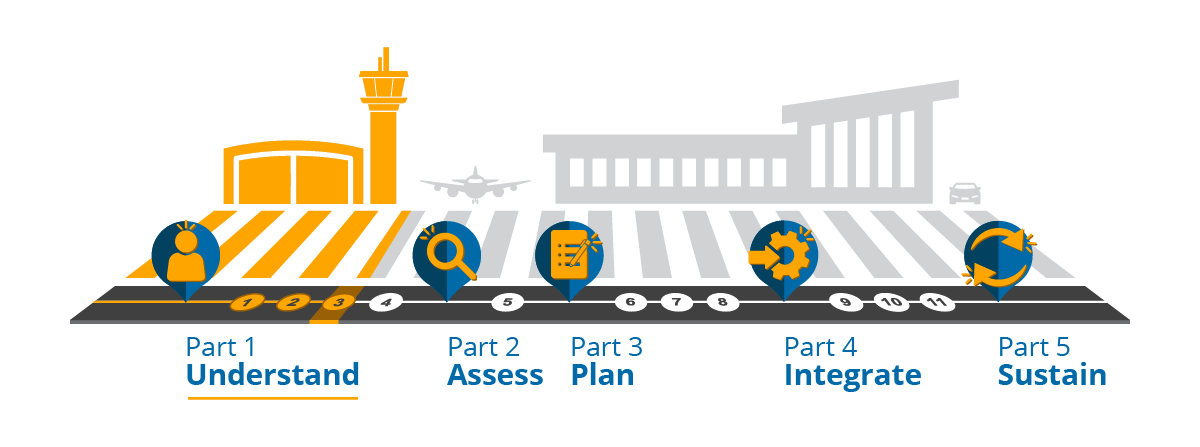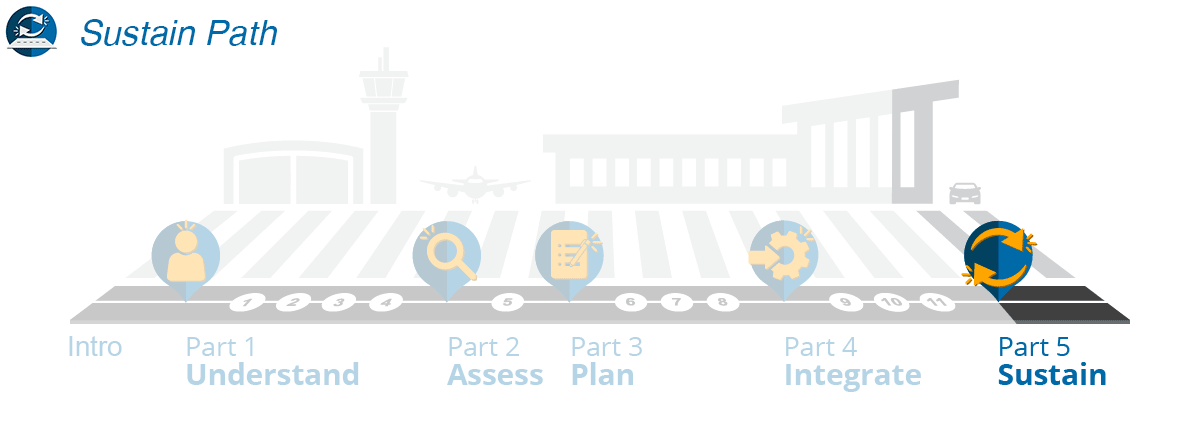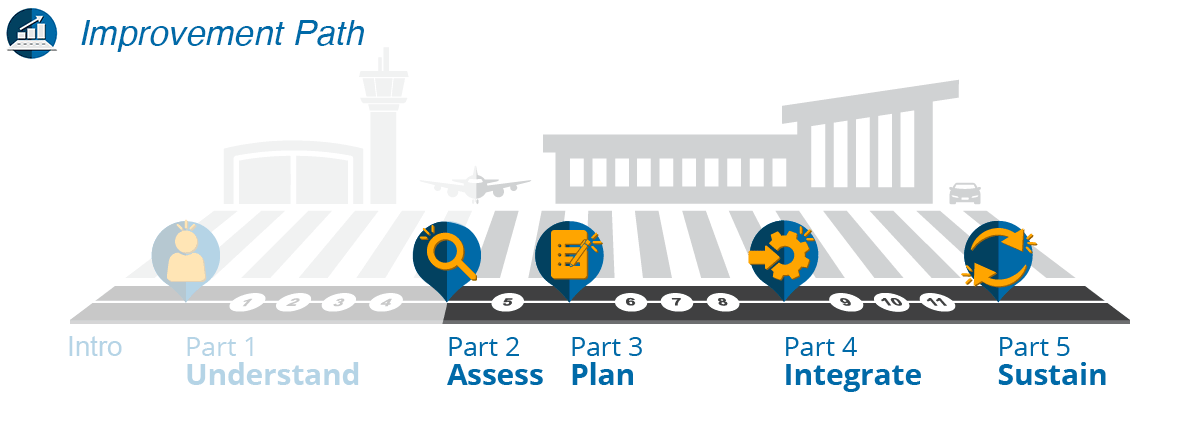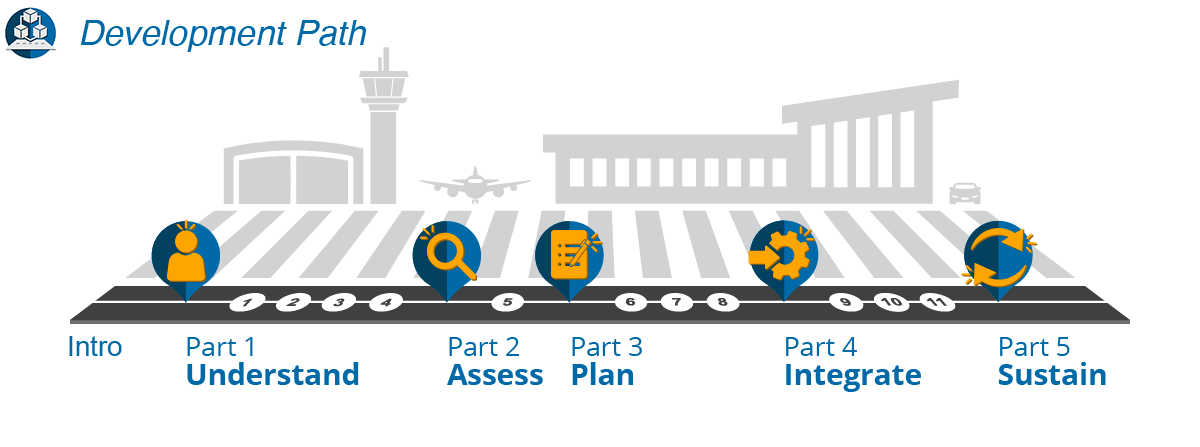
Step 3: Understand the Benefits of Using Social Media in Emergency Management
Whole Community
The very decision of an airport operator to build an SMEM program can initiate the breaking down of organizational silos and motivate various stakeholders—both internal and external to airports—to work together in a whole community approach (See Step 6: Define Your Stakeholders for further discussion on the whole community approach). The whole community approach incorporates traditional on-airport stakeholders and new partnerships. The associated benefits include the following:
- Initiating airport departmental collaboration
- Initiating airport collaboration with internal and external stakeholders
Initiating Airport Departmental Collaboration
Airport divisions such as public affairs, operations, and EM do not always collaborate closely enough to achieve the best possible results for improved EM operations. This is often due to organizational structures that can create individual silos and cultures that do not promote cooperation. In setting up a successful SMEM program, it is critical that these stakeholders collaborate in order to identify shared goals for the program. This includes efforts such as learning how to use SM and creating “one voice” messages on public-facing SM channels. For more information on stakeholder collaboration, see Step 6: Define Your Stakeholders.
Industry Example
When Edmonton International Airport, considered a medium-sized airport by U.S. standards, expanded its SM program into EM, it made several organizational changes that ultimately broke down silos among public relations, operations, and EM.4
Initiating Airport Collaboration with Internal and External Stakeholders
Building an SMEM program provides a great opportunity to work with on-airport and off-airport stakeholders. Engaging these stakeholders during the planning stages can help build relationships that are vital when responding to an incident. Furthermore, when these organizations work together and connect via private secure and public SM channels, they leverage information from one another, share knowledge by reposting SM messages, and obtain a holistic view of an emergency situation to make better response decisions. These efforts help to form a united front to the public, which can promote a more positive reputation for all involved.
While integrating SM into EM can produce significant benefits, these benefits often come with a share of challenges, as described in the next step.
REFERENCES
4. ACRP Synthesis 82: Uses of Social Media to Inform Operational Response and Recovery During an Airport Emergency, Transportation Research Board (Washington, D.C.: 2017), pp. 12–15, http://www.trb.org/Main/Blurbs/176496.aspx.




